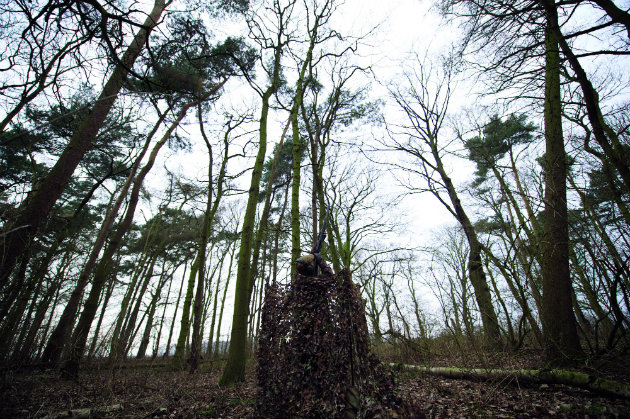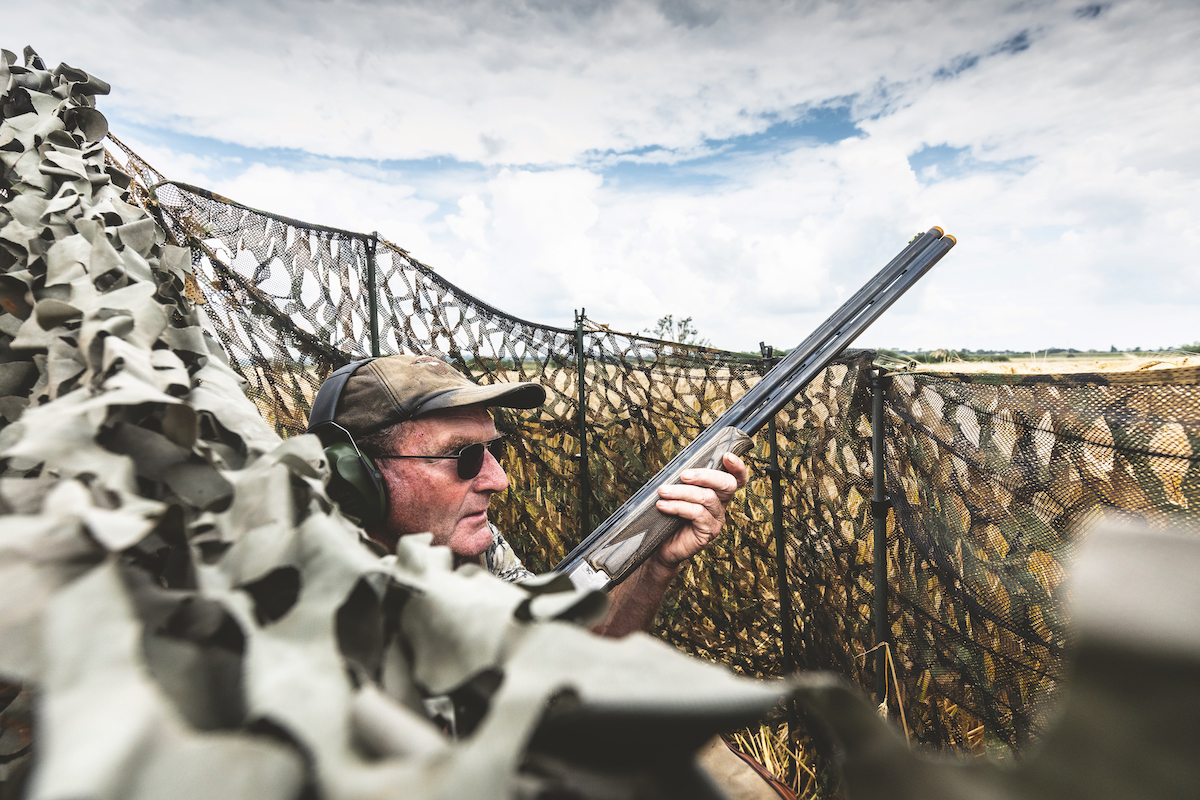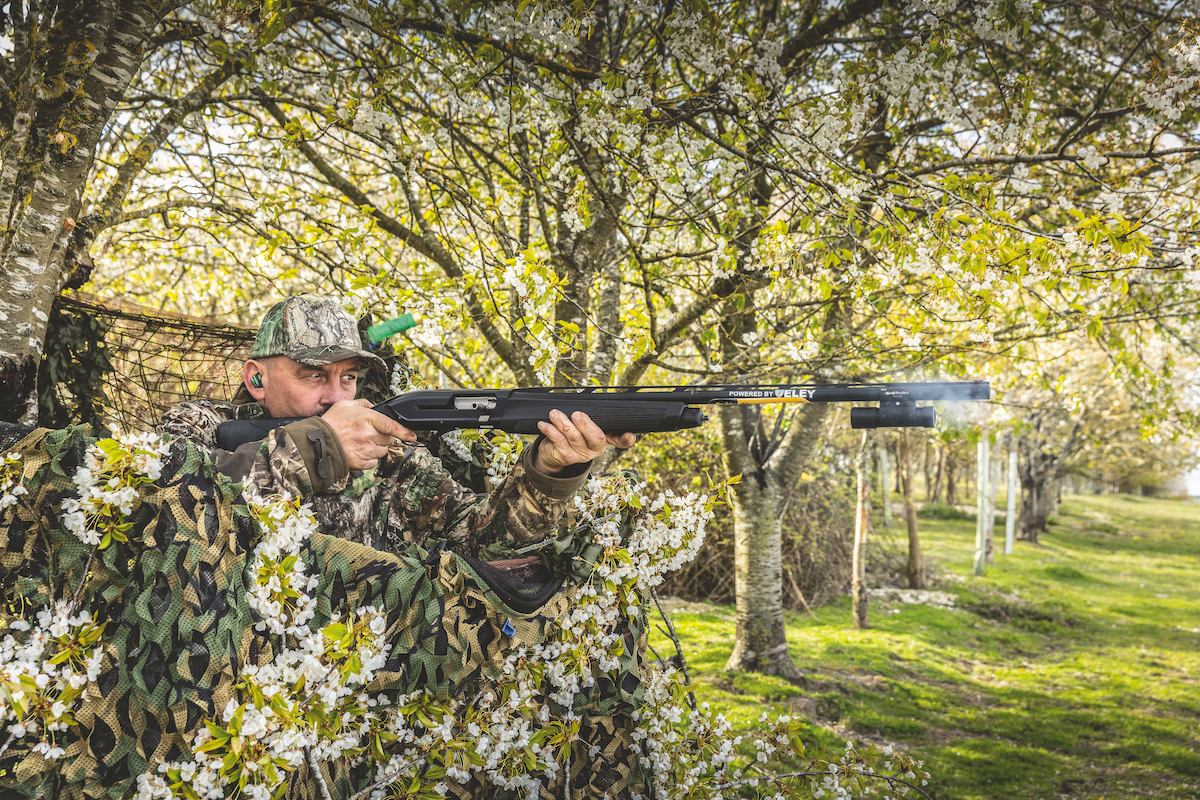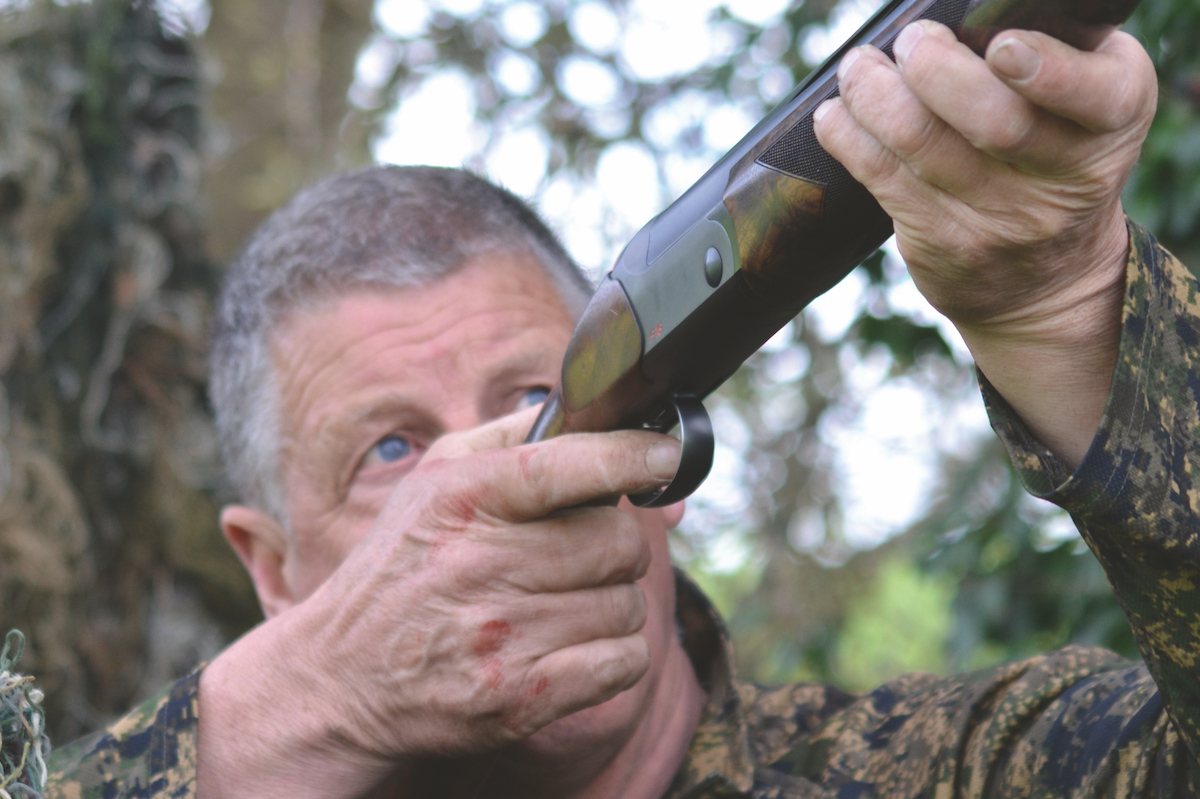When is the best time to start pigeon roost shooting? (And other frequently asked questions on the subject.)
Here are the answers to just some of the questions on roost shooting we're frequently asked - including the best time of year for it

Don't try to roost shoot as well as decoying: your birds will become jumpy
Q: When is the best time for pigeon roost shooting?
A: Traditionally, February is the month to start roost shooting, but this is purely because that is when the gameshooting season has ended, and the woods are opened up to the pigeon shooter. In my own little wood, I have had fantastic roost shooting as early as October, the only problem being finding a spot where you can see the birds coming through the leaf canopy.
The beauty of roost shooting in October or November is that the birds tend to arrive in smaller flocks, often even ones and twos, affording much better shooting. The best bag I ever made in my wood was in November, as pigeons were feeding on maize stubble and constantly flighted back to the wood, enabling me to pick off 82 in one blustery afternoon.
Q: How can I keep my roost shooting wood active? I go pigeon shooting in a big wood on my own in February and March. Shooting it alone has the advantage of not having other people firing at mile-high woodies, but being so large, birds often pitch in elsewhere, and stay put. Is there any way I can keep them on the move? Any suggestions would be gratefully received.
A: You could try placing rope bangers on the upwind side of the wood, but while they would certainly prevent pigeons settling there, there is no guarantee the noise would push them back to you. More likely, they would clear off completely, and if you did it on a regular basis, the birds might even forsake the wood entirely.
Personally, I would only shoot the wood sparingly, picking afternoons when the wind was blowing at least Force 6, and share the experience with a trusted friend. That way, the pigeons will continue to use the wood as a roost, and you should, with decent reconnaissance, get a few exceptional flights.
If I roost shoot a wood, will it mess up my decoying?
Q: I have just gained permission for pigeon shooting over three adjoining farms that grow a good variety of crops. In all there’s about 1,700 acres to cover. There isn’t much woodland apart from a 100 acre forestry block which holds a lot of pigeons. I would like to roost shoot this on a regular basis with a couple of friends but will I damage the prospects for decoying birds on outside crops if the wood gets disturbed by shooting?
A: I have a small 15-acre wood on my farm. On occasion there will often be in excess of 2000 pigeons roosting in it, but I shoot it very sparingly, probably no more than two or three times a year.
Whilst roost shooting can be superb sport, it is not a reliable way of killing a decent bag. Over the year, I might shoot 150 birds coming into roost, but I often get that in a day with a decoying situation.
I would much rather have a settled population roosting securely in my wood, knowing I can usually track them down when they flight out to feed. In this way, it would not be unusual for me to shoot more than a thousand birds in a year, all coming from my wood.
In your case, I would only roost shoot the wood during the winter, when good bags are hard to come by in the fields, and roving flocks are likely to move on anyway.
 Q: I read about disturbance to pigeon roosts and the effect this has on subsequent decoying days. Instead of shooting the wood, would the disturbance be lessened if I shoot at flighting pigeons where I intend to put out the decoys?
Q: I read about disturbance to pigeon roosts and the effect this has on subsequent decoying days. Instead of shooting the wood, would the disturbance be lessened if I shoot at flighting pigeons where I intend to put out the decoys?
A: You will soon see if shooting at flighting pigeons a distance away from their roost is having any effect on them landing, by watching the reactions of birds you have just fired at. If they just carry on into the wood and continue to land, you have cracked it.
Smaller woods are likely to be affected more than large ones, but for it to work at all, you need a decent wind, the stronger the better, and preferably for it to be blowing from the wood. The stronger the wind, the closer you will be able to get to the wood without disturbing it. If the wind is blowing towards the wood, you will certainly need to be half a mile away, quite apart from the fact pigeons seldom approach their roosting wood downwind.
How to improve your roost shooting skills
Mark Russell believes you need an instinctive feel when you’re roost shooting pigeons, but you can practise it
When pigeons come home to roost
Handy hints for successful roost shooting
Tips on roost shooting pigeon
Snap shooting is often the key when roost shooting pigeon, says coach Mark Russell.
Q: What’s the value of roost shooting?
A: Robin Scott says: Youngsters under supervision are able to put the skills they learned shooting clays to the test. In fact, I sometimes wonder how many hundreds, if not thousands, of children over the years have pigeon roost shooting to thank for introducing them to a lifelong pastime.
Then, of course, roost shooting is a long-held perk for beaters, a brilliant way for any gamekeeper, farmer or syndicate captain to thank people for all their hard work during the season. Some estate offices might also levy a small fee on shooters taking part in organised roosts, with all monies going to worthwhile causes such as the Game & Wildlife Conservation Trust.












